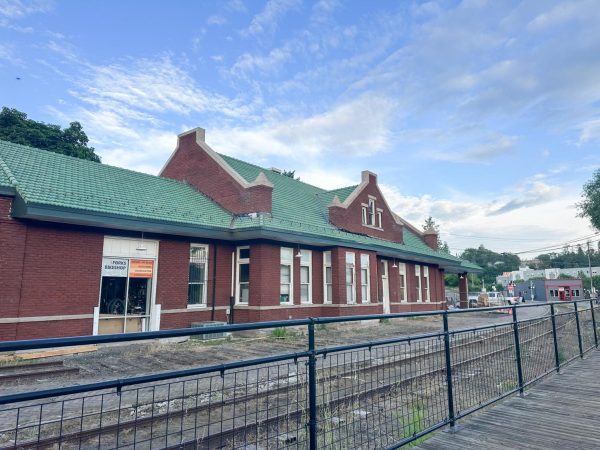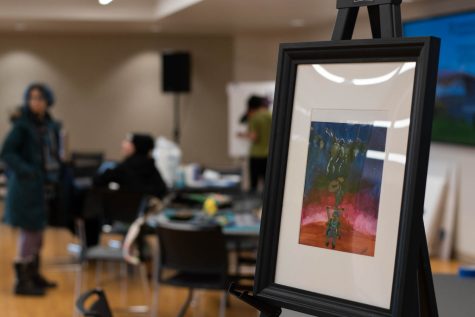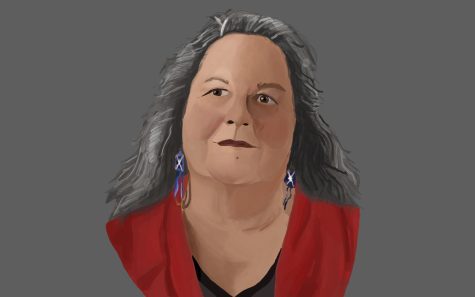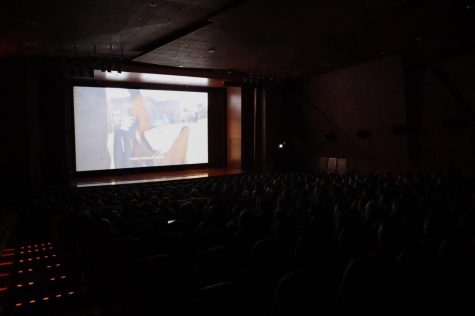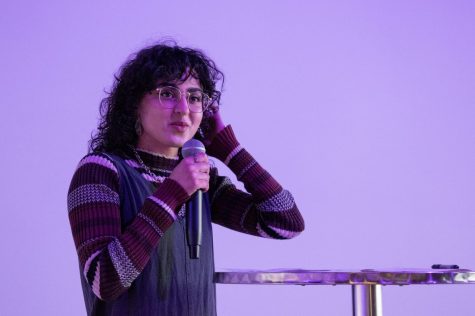Bauhaus revisited; Prichard Art Gallery features architecture-inspired photography
November 21, 2014
The streamlined and simple layout of the Prichard Art Gallery showroom mimics the content of its current exhibition, Bauhaus Twenty-21: An Ongoing Legacy.
Gordon Watkinson photographs both modern and early 1920s architecture side by side to compare and contrast ideals that transcend time.
Roger Rowley, Prichard Art Gallery director, said there is a lot of information alongside the photos.
“It is content rich, you don’t just look at a pretty picture and move on,” Rowley said.
Watkinson said the idea for the project came from a visit to the Bauhaus school building in Dessau, Germany. Bauhaus translates to “house for building” in German. The Bauhaus was an art and design school founded in 1919, and in it adopted the slogan “Art into Industry.”
“I was actually looking for furniture, I’m a big furniture fan,” Watkinson said.
But then, he said the building designs inspired him as a photographer. The thought process behind Bauhaus’ buildings is considerate, it combines art with efficiency and that kind of thinking should be applied to modern-day problems, he said.
“It’s a true learning experience in terms of what the visitor would find when they come here,” Rowley said.
Watkinson said he originally took photography in college to raise his GPA, but he ended up loving the art and even getting an internship from the class. He said as someone who is both left handed and dyslexic, photography was something that made sense.
“It was like another language to me,” Watkinson said. “It just clicked for me and from then on I knew what I wanted to do.”
The exhibit is purposefully arranged, photos of buildings designed in the 1920s hang adjacent to modern turn-of-the-century architecture to invite comparison.
“People think they’re in black and white, but actually they’re in black and white and blue,” Watkinson said.
Unfortunately, during the five years it took to complete the project, the company that produces the film that captures in black, white and blue closed down, so they had to recreate the effect in Photoshop on the later photos, he said.
He said it’s impressive a single small art school could have such a wide spread and lasting effect on the art world. Bauhaus ideas and ideals are still implemented today, even more so now as technology has advanced to better integrate art and function, he said.
“You’re seeing images from the original Bauhaus buildings and then seeing how it has continued to influence architecture today,” Rowley said.
One project by Bauhaus founder Walter Gropius particularly inspired Watkinson. Gropius combined art and function to design a series of compact homes in mass for working families, Watkinson said.
He said the houses were efficient and thought out. Even the rain water runoff was directed toward a use in nearby gardens, and the houses were available to the masses, he said. Watkinson said prefabricated, accessible yet high-quality housing has still yet to become available to the majority of the population. Effective and thoughtful housing for the working class is one aspect of the Bauhaus collection that is underutilized today despite its relevance, he said.
“If we could do this 90 plus years ago, why can’t we do it now,” Watkinson said.
Rowley said exhibits for the Prichard Gallery, located on Main Street of downtown Moscow, are chosen with consideration to both the Moscow community and University of Idaho students.
“We’re more integrated than most galleries or museums in to the local community,” Rowley said.
The gallery usually avoids historical art, and he said he tries to only show work from the past five to 10 years.
“Our mission and our concentration is on the current focus and current trends in the art world,” Rowley said.
Bauhaus Twenty-21: An Ongoing Legacy is an exhibit that reflects our mission to keep students informed and relevant in today’s art world, he said.
The gallery is open Tuesday through Saturday 10 a.m. to 8 p.m. and Sunday 10 a.m. to 6 p.m. The gallery is free to visit.










